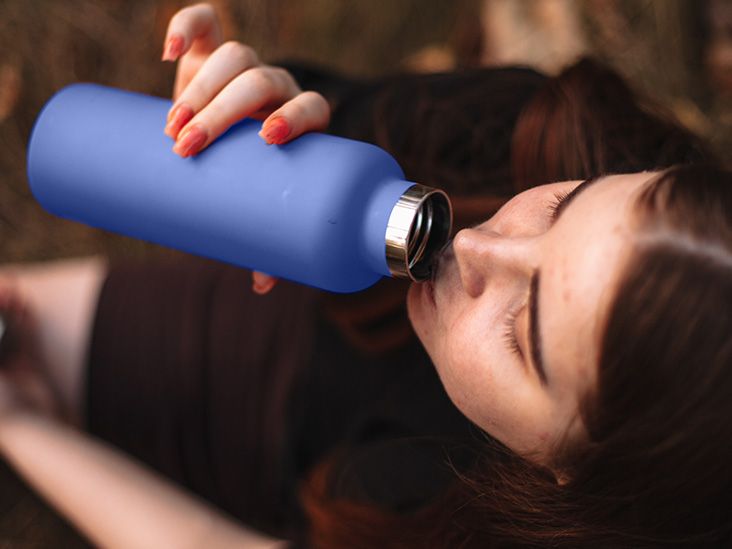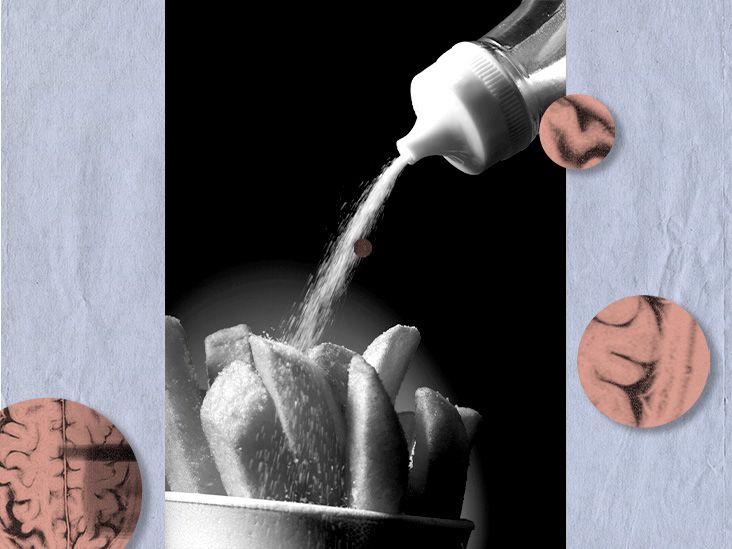Acute insomnia lasts only a few days to weeks and often results from specific circumstances, such as a bereavement. But, some people have chronic insomnia, which disrupts sleep for three or more nights a week and lasts 3 months or longer.

Trouble sleeping is a common problem. Around
It may come and go due to triggers such as a sudden change in environment, schedule, or life event. However, insomnia may also persist even after the initial triggering event.
This article explores insomnia, its effects, and the types that occur. We also look at its causes, diagnosis, recommended sleep hours by age, management and treatment, and ways to prevent insomnia.
A note about sex and gender
Sex and gender exist on spectrums. This article will use the terms “male,” “female,” or both to refer to sex assigned at birth. Click here to learn more.
The Diagnostic Manual of Mental Disorders Fifth Edition (DSM-V) defines insomnia as dissatisfaction with one’s sleep quality or quantity.
It may happen at
- Sleep onset: This refers to difficulty falling asleep.
- Maintenance: This is the difficulty of maintaining sleep; it involves frequent or prolonged awakenings throughout the night.
- Terminal: This involves early morning awakening and the inability to return to sleep.
A person’s sleep complaint may include any or a combination of the above. These symptoms cause some form of daytime impairment, such as irritability and excessive daytime sleepiness.
Insomnia can lead to significant consequences, including:
- depression
- accidents
- impaired work performance
- overall poor quality of life
How common is it?
Studies worldwide show that it affects
Approximately 25% of people in the United States experience acute insomnia every year, and 75% of these people recover without developing chronic or persistent insomnia.
Females are
Acute vs. chronic differences
Insomnia may differ in terms of frequency and duration.
Acute insomnia refers to sleep disruptions between
In acute insomnia, a precipitating factor plays a major role. The triggering event may be any life event that significantly reduces a person’s quality of life compared to their ideal, or it could be distress in a current situation.
Experts identified life stress as the primary precipitant for acute insomnia.
Chronic insomnia refers to sleep difficulties that cause clinically significant functional stress or impairment. They must be present
Clinicians may identify acute and chronic insomnia based on a person’s description. When a person no longer mentions a life stressor and focuses on insomnia as the problem, it may signify that they have transitioned from acute to chronic insomnia.
Studies show that the two may also differ in their biological cause. Acute insomnia may link to increased cortisol levels, while chronic insomnia occurs because of deficient levels of gamma amino-butyric acid.
Primary insomnia refers to insomnia that is not due to another medical or psychiatric disorder. Secondary insomnia directly associates with another medical condition. These
- mental health conditions such as depression and post-traumatic stress disorder
- traumatic brain injury
- neurological disorders such as Alzheimer’s disease and Parkinson’s disease
- arthritis
- hormonal problems
- gastrointestinal disorders such as heartburn and GERD
- stroke
- cancer
- menopausal symptoms
- a side effect of medications
- pregnancy
- childbirth
- drinking coffee or alcohol, or consuming tobacco
- having a partner with sleep problems
A doctor will gather a detailed medical, psychiatric, and sleep history to diagnose insomnia. They may ask questions about a:
- person’s medications
- substance use
- intake of caffeinated drinks
- sleep habits
They will also ask the person to keep a sleep diary for 2–4 weeks. A person logs their:
- alcohol and caffeine intake
- day time naps
- bedtime activities
The doctor may also ask the person to complete a self-evaluation questionnaire such as the
Doctors offer non-pharmacological treatments first. However, they may opt to
Insomnia treatment may also include lifestyle changes and therapy.
Non-pharmacologic treatments
- Sleep hygiene: This type includes educating individuals about lifestyle changes such as:
- avoiding late-night dinners
- reducing daytime naps
- not drinking caffeine or alcohol
- stopping smoking
- Sleep restriction therapy: This therapy restricts total sleep time to increase a person’s drive for sleep and help improve sleep efficiency.
- Stimulus control therapy: This type restricts poor sleep behaviors such as late-night use of gadgets and eating in bed so that people associate the bed with sleep.
- Cognitive behavioral therapy:This approach helps worries or anxiety with more reassuring beliefs and attitudes. This addresses factors that contribute to persistent insomnia, including:
- conditioned arousal
- ineffective sleeping habits
- sources of hyperarousal
Pharmacologic treatments
Prescription drugs used for chronic insomnia
- benzodiazepine receptor agonist drugs (temazepam)
- antihistamines (diphenhydramine)
- antidepressants (trazodone)
- anticonvulsants (gabapentin)
- melatonin receptor antagonists (ramelteon)
Over-the-counter sleeping aids are also available to people, which may contain melatonin.
However, the Food and Drug Administration (FDA)
People have used herbs for centuries to promote relaxation and sleep. Examples include chamomile such as in tea and lavender. A
2019 research uses the “3P or the Spielman model” to explain how insomnia occurs, becomes chronic, and becomes self-perpetuating.
Understanding the three factors that contribute to the development and maintenance of chronic insomnia can help a person prevent acute insomnia from becoming chronic.
- Predisposing factors: Genetic makeup and a person’s tendency to worry or excessively ruminate.
- Precipitating factors: These are factors that trigger acute insomnia, such as irregular work hours, emergencies, trauma, relationship problems, caring for a newborn or a sick relative, and physical illness
- Perpetuating factors: These are actions that a person adopts to compensate or cope with sleeplessness, including staying in bed while awake and doing non-sleep behaviors in bed
By identifying and changing any of these factors, a person may prevent chronic insomnia. People can speak with a doctor to explore possible ways to prevent it from occurring.
How much sleep a person needs vary by age. Below are the
| Age group | Recommended hours of sleep per day |
| Newborn (0–3 months) | 14–17 hours |
| Infant (4–12 months) | 12–16 hours per 24 hours (including naps) |
| Toddler (1–2 years) | 11–14 hours per 24 hours (including naps) |
| Preschool (3–5 years) | 10–13 hours per 24 hours (including naps) |
| School-age (6–12 years) | 9–12 hours per 24 hours |
| Teen (13–18 years) | 8–10 hours |
| Adult (18–60 years) | 7 or more hours per night |
| Adult (61–64 years) | 7–9 hours |
| Late adulthood (65 and above) | 7–8 hours |
Below are some FAQS on the topic and the links insomnia has with other behaviors and conditions.
Insomnia and smoking vs. quitting smoking
Smoking is a significant risk factor for insomnia. However, more research with larger sample sizes needs to explore this association in greater depth.
A 2019 study showed that people had increased nighttime arousal and wake time after sleep 24–36 hours after quitting smoking. This may continue for the first weeks of quitting. However, it will resolve within 3 months to a year after stopping.
A person can consult a doctor to determine possible effects that may occur after quitting alcohol and ways to manage symptoms.
Insomnia and alcohol vs. quitting alcohol
A
Insomnia can improve over the detoxification period. However, it may continue for up to 3 years.
People can speak with a doctor to discuss the possible effects of quitting alcohol and ways to manage symptoms.
Insomnia and steroid injections
Insomnia and other side effects may occur after cortisone injections. These typically resolve within 24 hours.
A person can discuss other possible effects and ways to relieve them.
Insomnia and orgasm
Sexual activity with orgasms may help
Insomnia and COVID-19
About
Other common symptoms include:
- fatigue
- depression
- anxiety
- shortness of breath
- chest pain
- variation of heart rate and blood pressure
- gastrointestinal symptoms
People should speak with a doctor to determine the cause of their symptoms, which may or may not associate with COVID-19.
Insomnia and surgery
Surgery may also cause insomnia during the first 6 nights after surgery and return to pre-operative levels within the first week.
Individuals should discuss these possible risks and ways to manage them with their doctor.
Insomnia and stroke
About
People should consult a medical professional to determine what to expect after a stroke.
Insomnia is a common sleep disorder. It can be short-term and occurs due to life stressors. It can also be a chronic condition lasting more than 3 months.
This sleep disorder may occur without known cause or secondary to a medical or psychiatric disorder. It can also associate with alcohol and smoking withdrawal, stroke, or surgery.
Most resolve with lifestyle changes and sleep hygiene, while others may require further intervention, such as CBT and medications.


